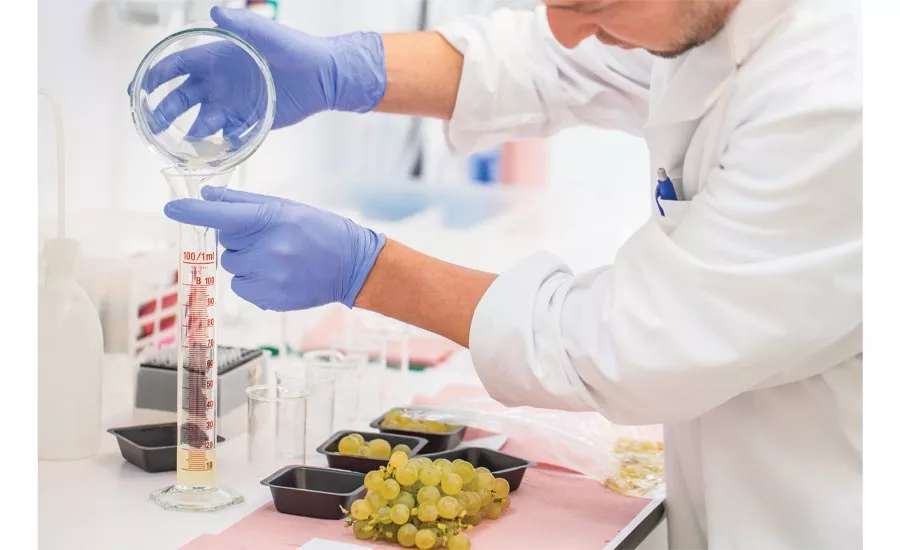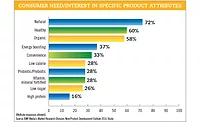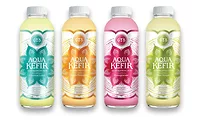Market Insights
Don’t wait out pandemic to start new product development
Beverage entrepreneurs still can accomplish steps to help create new brands

The pandemic has caused many entrepreneurs to pause and rethink their strategy. Many entrepreneurs who have great new food and beverage ideas are waiting to see what happens. I can say, that is a very bad strategy for entrepreneurs because while they wait, others will be moving forward and will be the first to gain shelf space when the country goes back to our new normal.
Let’s look at a typical timeline for a new food or beverage item. For argument’s sake, let say you already have an idea in your head. What do you do next?
Let’s start with research and development. You might be able to create your product in your kitchen today, but it will be more difficult once you move to the production phase. For a basic example, let’s say you are using Heinz ketchup as an ingredient. If so, you need to consider the minimum size you can usually order for a production run, costs and profit margins, taste profiles, less expensive but quality counterparts, where to obtain bulk alternatives, free sample requests, etc.
This all leads up to hiring a person or company, like Parkside Beverage, Beyond Brands, or Metabrand amongst other reputable firms. Get your recipe or formula done right the first time. In the grand scheme of things their fees are not a lot of money and you need to get it right the first time. Reformulating takes time and money.
Now let’s look at the timing and timeline. Even during these COVID-19 times, reputable formulation companies are still busy. It might take two weeks until they can accept your business.
With your developed formula, you still need to consider what product attributes you want it to have: GMO free, organic, kosher? These processes take time and someone has to fill out all the paperwork and get all the information for the certifier.
Let’s consider the next step being shelf testing. You want to know what happens to your product after being exposed to different levels of heat, cold, light, etc. Are any bacteria growing? What about yeast, pH, mold, salmonella, E. coli, listeria, staph, aureus etc.? How long will your product be on the shelf before the color or taste or aroma begin to change? Retailers and distributors also might request to see the shelf life test results.
According to RL Food Testing Lab, product safety testing will take different times depending on the type of item you are testing.
Depending on the product, the rule of thumb regarding shelf-life testing is that a product needs one week of testing for every month of shelf life. For instance, let’s say it takes you 90-120 days until you get your test results.
Now, let’s focus on positioning/branding/label/logo development. To start, you need to determine what your unique selling proposition will be. What makes your product different?
There are a few ways you can handle product positioning. The first way is to do it yourself. Develop some reasons why you are unique and discuss it with friends and family. Risks with this could include “nice” answers or members outside of your key demographic. However, it can be done and it has been done this way.
Another way to approach branding and positioning and your unique selling position is to hire a professional like Cascadia or you can hire other professionals like Arena Partners or Modernized Mobile, for example, or another reputable agency who will work within your budget.
If you do not have a unique selling proposition, don’t start a food or beverage company. You will just be setting yourself up for failure. The branding and positioning process should take about 30 days if you and your branding firm can quickly turn around content and feedback. Presuming you have your unique selling proposition as well as your brand positioning, all of your marketing efforts will flow more smoothly.
Once you have the USP, it is time to design your logo. Logo development is a very iterative process. It can be done within two to four weeks if you and your designer turn around feedback and work quickly. Let the designer do their job and give you various options to consider. Wanting what you want just for the sake of having it can create problems in this phase. After all, you don’t want a logo that you love but consumers hate.
Now that you have your logo, it’s time to start working on your label. You want to create something that will get the consumer’s attention and is in compliance with FDA regulations.
First, your agency or designer need to create your label. After that, you should send it to an FDA attorney for review. A FDA attorney usually will give you advice about the best ways to avoid class action lawsuits.
The label design and FDA label review take about another six weeks or so, unless you need live photography or custom illustration for the label. FDA attorneys also can handle your trademarks and patents if necessary.
Now that your name has been chosen, your logo and label has been designed and the FDA attorney has approved your label, it is time to start working on developing your point-of-sale (POS) materials and distributor or key account presentation. Items to prepare include, but are not limited to, product sell sheets, detailed brand presentations, POS materials like cold box stickers, channel strips, wobblers and display units.
It should take about two weeks to design these items and about two more weeks for a printer to print these items.
Now that your product is being developed, you need to purchase liability insurance. Large supermarket and natural supermarket chains will require you to have between $2 and $5 million of product liability insurance. Otherwise they won’t buy from you. An insurance broker will give you a questionnaire to fill out and your rates will depend, in part, on your answers.
Next, you should define your distribution strategy and send samples to distributors and retailers in accordance to that strategy. Without going into too many details, it is going to take you anywhere from a few months to six months to secure distribution and get an order. In general, you need to consider it might take you three to six months without getting your first actual order.
When you add up the variable timelines, it can take as long as 42 weeks to get your new product on shelf. We haven’t even discussed developing a marketing plan, creating a website, social media, etc. Yet, some of this timeline is not entirely fair because some of the weeks will overlap. So, let’s discount the number of weeks by 30 percent. The new total is 29.4 weeks.
The point being is that even during this pandemic and with sales restrictions associated with it, you need to start now because this process can be long. In other words, get started today.
Looking for a reprint of this article?
From high-res PDFs to custom plaques, order your copy today!




